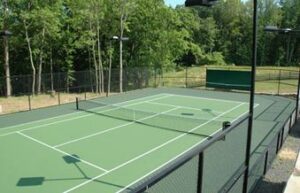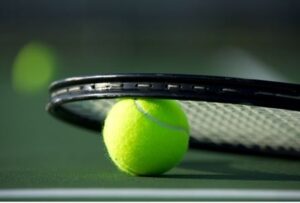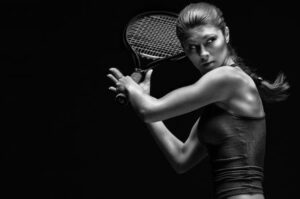 If you took a look at the game of tennis, historically, you’d find that many of the sport’s greatest, most well-known players grew up honing their tennis skills using tennis backboards.
If you took a look at the game of tennis, historically, you’d find that many of the sport’s greatest, most well-known players grew up honing their tennis skills using tennis backboards.
Pete Sampras got his start hitting a tennis ball against a backboard when he was about 7-years-old. Venus Williams, Monica Seles, Roger Federer, John McEnroe, and Martina Navratilova also spent hours and hours during their early years hitting balls against the boards/walls. Tennis great Jimmy Connors once remarked, “My favorite opponent is the backboard– he never misses.”
Indeed, the tennis backboard has helped many aspiring tennis players improve their overall tennis game over the years. Backboards allow a player to not only practice their swing, but to also try hitting the bill right in the middle of their racket. They are a great training tool, helping players develop their hand-eye coordination, ball tracking, ball placement, and ball handling skills. Meanwhile, a backboard functions as an opponent– a tireless one. Many people have started out playing tennis by hitting a ball against a backboard. For those who start young, that time with the backboard typically turns into a lifetime of fun, exercise, competition and sport. Backboards, it could be said, are often a tennis beginner’s new best friend.
Backboards are an inexpensive, easy and quick way for tennis players to practice their serves and returns while also getting a great cardio workout. While they’re typically placed with/near tennis courts, some facilities have them as a stand-alone infrastructure feature, for space reasons or whatever reason, and they still serve their function.
 One thing’s for sure: it can be hard to find a person to play tennis with sometimes because everyone seems to have busy, odd schedules. Therefore, a tennis backboard can stand-in for a person, and is available at all times. Furthermore, many players count their time with the backboard as the secret to their on-court success. Practicing with a backboard is oftentimes the key to getting better at the sport.
One thing’s for sure: it can be hard to find a person to play tennis with sometimes because everyone seems to have busy, odd schedules. Therefore, a tennis backboard can stand-in for a person, and is available at all times. Furthermore, many players count their time with the backboard as the secret to their on-court success. Practicing with a backboard is oftentimes the key to getting better at the sport.
The thing about the backboard is this: it’ll always send the ball back to you, whereas a person might miss it. Over time, the backboard will enable the player to notice patterns, such as angles involved in how a ball is returned to them. The backboard serves as a “rally” partner. It forces a player to exercise control of where the ball goes, and also forces them to improve their form. People have to think fast, focus on their aim, and make decisions when playing with a backboard. In a way, it enables a tennis player to become the best tennis player they can be– it’s a great challenger.
Though most people probably wouldn’t even think of this, consider that a typical session practicing with a backboard inevitably could involve thousands of controlled repetitions. A person could therefore build good tennis playing habits while doing these repetitions. “Practice makes perfect” is the old saying. Well, while no player is technically perfect, the ones who use a backboard for practice often become near perfect, that’s for sure.
Where can you buy a tennis backboard? They’re not the sort of thing you’d buy at your local Wal-Mart. Now Classic Turf Company of Connecticut is known for constructing tennis courts. That said, the company uses Rally Master Backboards, and can incorporate them into tennis court design or as a stand-alone feature elsewhere. These backboards are made from solid polyethylene, coming in panel form. With a 20-year warranty, they’re long-lasting, and hold up well year-after-year even in climates with harsh weather.
 Classic Turf’s backboards have their color molded into them which means they won’t peel or scratch thanks to modern technology. They are high quality, of course, and even have vibration-dampers, which quiet the impact. In other words, when a ball hits the backboard, the noise level won’t be a loud thud. Rather, the noise is akin to a ball hitting a racket.
Classic Turf’s backboards have their color molded into them which means they won’t peel or scratch thanks to modern technology. They are high quality, of course, and even have vibration-dampers, which quiet the impact. In other words, when a ball hits the backboard, the noise level won’t be a loud thud. Rather, the noise is akin to a ball hitting a racket.
Did you know that most residential courts opt for the 16-foot wide backboard, while clubs and schools go for the 20-foot option? In general, one or two players can utilize the backboard at a time.
Finally, backboards are great for warming up before a game. Players typically practice their forehands and backhands for five or ten minutes, before they have to go into a game where points matter.
For more information about Classic Turf tennis courts and backboards, please call toll-free: 1-800-246-7951 or email the company at sales@classicturf.org.
